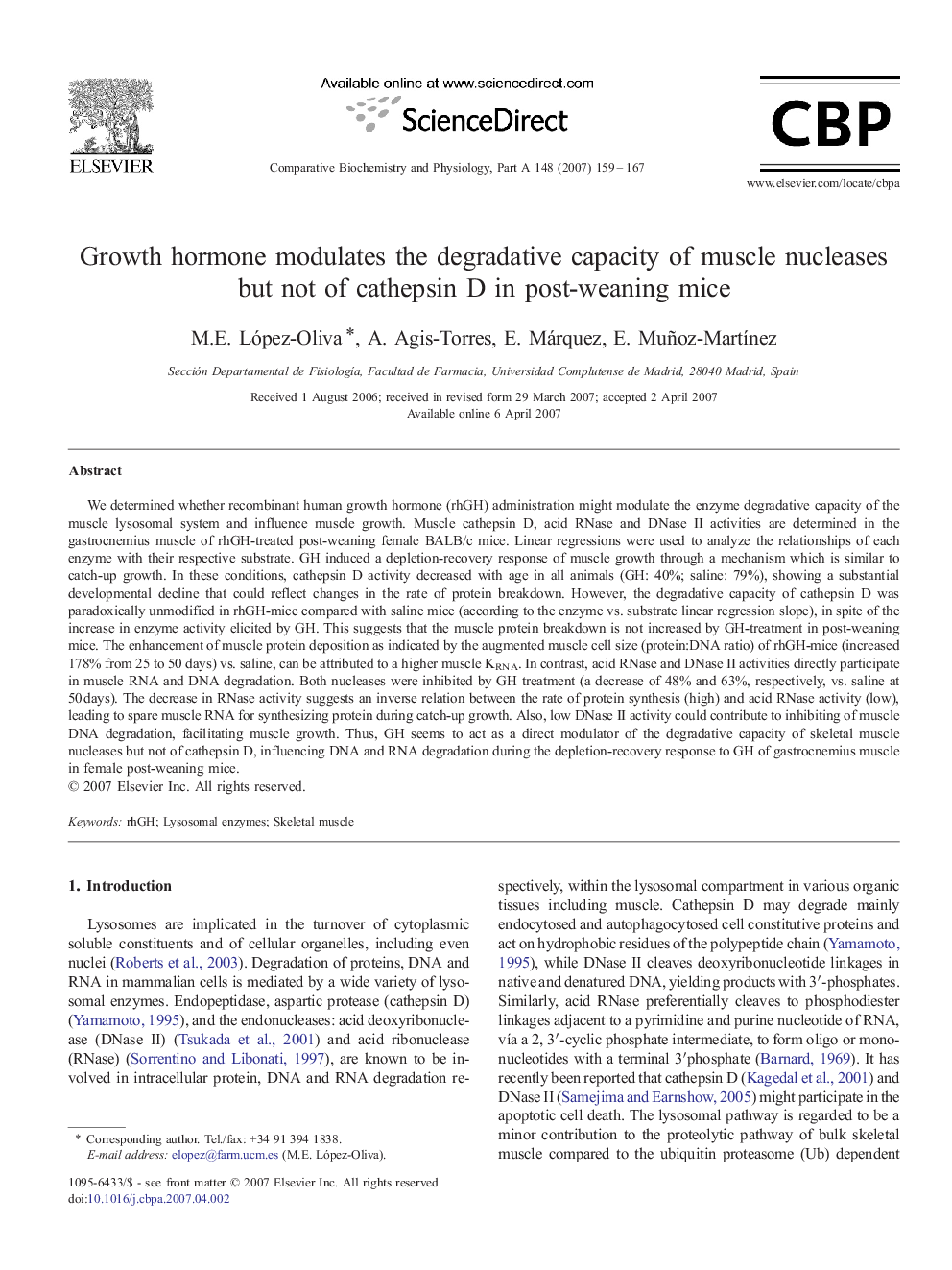| کد مقاله | کد نشریه | سال انتشار | مقاله انگلیسی | نسخه تمام متن |
|---|---|---|---|---|
| 1974756 | 1060378 | 2007 | 9 صفحه PDF | دانلود رایگان |

We determined whether recombinant human growth hormone (rhGH) administration might modulate the enzyme degradative capacity of the muscle lysosomal system and influence muscle growth. Muscle cathepsin D, acid RNase and DNase II activities are determined in the gastrocnemius muscle of rhGH-treated post-weaning female BALB/c mice. Linear regressions were used to analyze the relationships of each enzyme with their respective substrate. GH induced a depletion-recovery response of muscle growth through a mechanism which is similar to catch-up growth. In these conditions, cathepsin D activity decreased with age in all animals (GH: 40%; saline: 79%), showing a substantial developmental decline that could reflect changes in the rate of protein breakdown. However, the degradative capacity of cathepsin D was paradoxically unmodified in rhGH-mice compared with saline mice (according to the enzyme vs. substrate linear regression slope), in spite of the increase in enzyme activity elicited by GH. This suggests that the muscle protein breakdown is not increased by GH-treatment in post-weaning mice. The enhancement of muscle protein deposition as indicated by the augmented muscle cell size (protein:DNA ratio) of rhGH-mice (increased 178% from 25 to 50 days) vs. saline, can be attributed to a higher muscle KRNA. In contrast, acid RNase and DNase II activities directly participate in muscle RNA and DNA degradation. Both nucleases were inhibited by GH treatment (a decrease of 48% and 63%, respectively, vs. saline at 50 days). The decrease in RNase activity suggests an inverse relation between the rate of protein synthesis (high) and acid RNase activity (low), leading to spare muscle RNA for synthesizing protein during catch-up growth. Also, low DNase II activity could contribute to inhibiting of muscle DNA degradation, facilitating muscle growth. Thus, GH seems to act as a direct modulator of the degradative capacity of skeletal muscle nucleases but not of cathepsin D, influencing DNA and RNA degradation during the depletion-recovery response to GH of gastrocnemius muscle in female post-weaning mice.
Journal: Comparative Biochemistry and Physiology Part A: Molecular & Integrative Physiology - Volume 148, Issue 1, September 2007, Pages 159–167